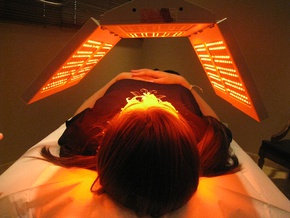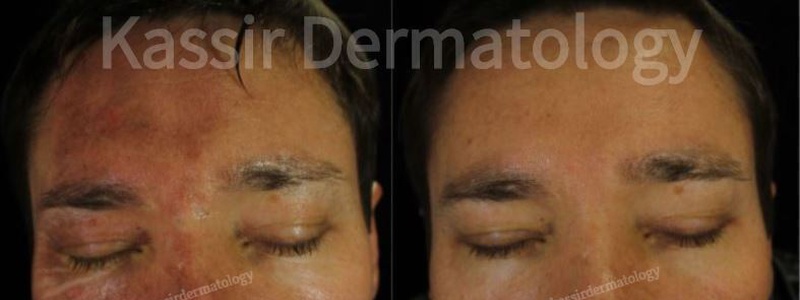
LED TREATMENT

LED (Light Emitting Diode) therapy may be used for a variety of skin conditions including acne and inflammation after cosmetic procedures.
Request More Info About
LED TREATMENT
LED TREATMENT IN DEPTH
by Martin Kassir, M.D., F.A.A.D.
Our office uses two wavelengths when treating acne. We use the red LED and the blue LED. The blue LED Light treatment is designed to impact the growth of the bacteria associated with acne; the red LED treatment is designed to minimize inflammation and irritation of the affected area.
When having the red and blue LED treatment in combination, the treatment takes approximately 30 minutes. There is no down time to this treatment and it may be repeated multiple times in a week or as many as your condition may require. LED may be combined with microdermabrasion and/or other treatments to help improve acne.
Finally, red LED light may be used after certain procedures to decrease inflammation and redness.
LED Treatment Before & After Gallery
Click here to see the led treatment gallery

Severe radiator burn right side of face, treatment with Red LED and customized Kassir Dermatology Burn Protocol shows remarkable improvement. Dallas, Texas

This patient suffered from a chemical peel burn done by a different practitioner. Polarized photos show inflammation and redness on cheeks, forehead, and chin from …

Patient presented with a burn on her forehead. She was enrolled in the KD burn protocol, after treatment with LED light therapy, remarkable results were …
aSKINg the EXPERT: LED Treatment
Is there any pain with LED Therapy?
Compared with other procedures for skin rejuvenation and acne, LED light therapy can be an attractive skin care alternative. Red and Blue light therapy are NOT painful.
Is there any down time with LED Therapy?
There is NO down time with LED Therapy. LED Therapy does not involve surgery or cutting.
How does RED LED Therapy work?
Red light therapy can increase blood circulation, reducing skin inflammation and nourishing damaged tissues.
How does BLUE LED Therapy work for acne?
Blue light appears to come by its action on Propionibacterium acnes (the bacteria in acne) and its anti-inflammatory properties. P. acnes contains molecules called coproporphyrin and protoporphyrin IX. Absorption of blue light by these molecules is believed to induce a reaction with destruction of the bacteria by the formation of oxygen free radicals. Blue light’s anti-inflammatory effect appears to be the result of a shift in cytokine production.
LED TREATMENT News
Treatment for Burns, Acne, Rosacea, etc.
by Martin Kassir, M.D., F.A.A.D.

Light Emitting Diode (LED) Therapy
by Martin Kassir, M.D., F.A.A.D.

Kassir Dermatology © 2025








